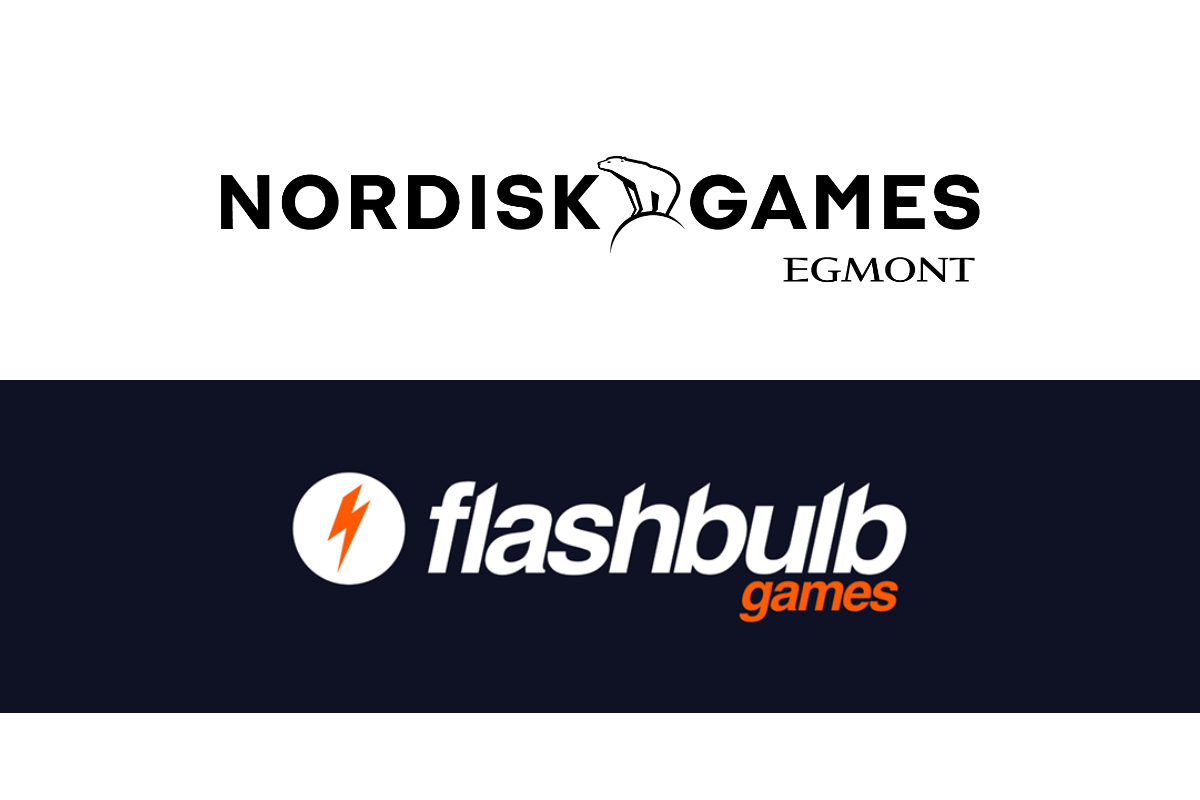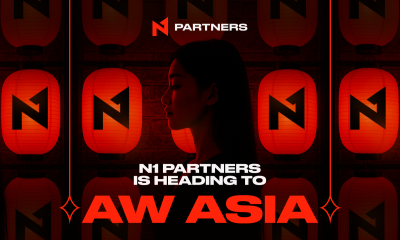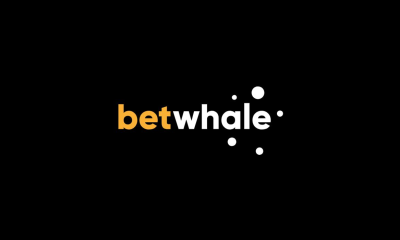Gaming
Nordisk Games acquires Flashbulb Games, creators of Trailmakers, the innovative physics-based, open-world build-em-up

Nordisk Games acquires 100% of the Danish games studio having previously acquired a minority stake back in 2017
Copenhagen-based Nordisk Games has acquired the Danish games studio Flashbulb Games, having previously invested 16.5 million DKK in the studio for a 43% stake. Depending on the studio’s financial performance in the coming years, the 100% acquisition price can amount to several hundred million DKK.
”Flashbulb is a studio packed with talented and experienced developers, who understand and enjoy the challenge of creating really unique games and turning them into commercial success. Having collaborated really well for the past five years we were keen to increase our involvement, which led to the discussion with the founders to acquire 100% of the studio. We now very much look forward to continuing to work together for many years to come,” said Martin Walfisz, Senior Partner at Nordisk Games and chairman of Flashbulb Games.
Flashbulb Games are best known as the creators of Trailmakers, an innovative open-world physics-based game where players can build vehicles through a simple drag and drop system and use them to explore and compete. Its latest game, Rubber Bandits, is a cross-platform multiplayer party game launching on Xbox, Playstation and Steam on December the 2nd. The studio was founded in 2016 by Rune Dittmer, Ole Teglbjærg, Mikkel Thorsted and Lasse Outzen, who had previously worked together at Press Play.
“Nordisk Games were the first to invest in us not long after we founded the studio, and they have always been super-supportive while at the same time being happy to let us dictate the direction of the business. In a way, becoming a full part of Nordisk Games will be no different to our experiences of working with Martin and Sofie on the board, and the rest of the Nordisk Games team. You could say that we have been dating for the last few years, and now we are finally getting married,” said Rune Dittmer, Managing Partner & Co-Founder at Flashbulb Games.
Nordisk Games is owned by the entertainment company Nordisk Film, which is a part of Egmont, a leading Nordic media group. In recent years Nordisk Games has built a high growth portfolio of minority and majority-owned game studios that includes Avalanche Studios Group, Supermassive Games, Star Stable Entertainment and MercurySteam. To date, Nordisk Games has invested more than €200 million in games studios based across Europe, with more than 1,100 talented employees.
Powered by WPeMatico
Gaming
Make-A-Wish® and Lords Mobile Unite This Thanksgiving Season to Bring Hope to Children Through Mobile Charity Event

Reading Time: 2 minutes
From November 26-30, Lords Mobile players worldwide can help grant life-changing wishes for children with critical illnesses through a global in-game charity challenge.
Make-A-Wish®, the world’s leading wish-granting organization, is delighted to announce a special collaboration with IGG, the global developer and publisher of hit mobile titles.
This Thanksgiving season, the two organizations are coming together to transform the spirit of gratitude into global impact through a community charity challenge inside Lords Mobile.
From November 26 to 30, 2025, players from around the world will unite across their respective Kingdoms to combine play with purpose. By completing five days of in-game quests and collecting 30 event points, players can unlock the exclusive “Wish Upon a Star” Decoration – a special symbol of hope within the Lords Mobile world.
Once 50,000 players across the global server have claimed the Wish Upon a Star Decoration, IGG will donate $50,000 USD to Make-A-Wish to help grant life-changing wishes for children with critical illnesses. The donation will support wishes in the USA, Indonesia, Brazil, Germany, Singapore, and Korea.
Players who wish to enhance their event experience can also purchase four in-game packs priced at USD 4.99 or above to unlock premium rewards such as Mystic Carpets, Royal Coins, and more.
April Stallings, Charitable Gaming and Creators Community Manager at Make-A-Wish International said:
“Thanksgiving is a time for reflection, generosity, and connection. We’re deeply grateful to IGG and the global Lords Mobile community for harnessing their passion for play to help make life-changing wishes come true. Together, we’re turning the power of gaming into the power of hope.”
As players unite to achieve their community goals, Make-A-Wish will highlight real wish stories from participating countries, connecting the in-game achievements to the life-changing impact they help create.
Together, IGG and Make-A-Wish are showing the power of the gaming community to make a difference.
The post Make-A-Wish® and Lords Mobile Unite This Thanksgiving Season to Bring Hope to Children Through Mobile Charity Event appeared first on European Gaming Industry News.
155.io
155.io flips the script again with Coin Flip game release

Reading Time: < 1 minute
155.io, the live content studio built for a mobile-first world, has turned convention on its head with the launch of Coin Flip, a machine-run coin-flipping game.
Tossing coins is as old as time as a means to settle football matches, pub games, and everyday decisions – now 155.io has transformed that timeless ritual into a live, 24/7 digital betting experience.
Central to Coin Flip is a real coin-flipping machine, powered by a precision solenoid and monitored by an overhead camera. Every coin flip is analysed by machine learning and AI systems that record and validate results in real time, feeding the outcome directly into a secure game engine. All players have to do is correctly pick heads or tails – one side features the U.S. President and the other the American flag.
Coin Flip runs continuously, 24 hours a day, offering the world’s simplest, fastest, and totally transparent betting experience.
155.io Founder and CEO Sam Jones commented: “Tossing coins is something humans have done for millennia to decide anything from fixtures to fiefdoms. Coin Flip modernises that ancient ritual, in true 155 style, and adds a competitive layer that makes it seriously entertaining.”
The post 155.io flips the script again with Coin Flip game release appeared first on European Gaming Industry News.
Counter-Strike 2
Just Dance, MLBB and HADO Added to Lineup of Global Gaming Icons for the Games of the Future 2025
Reading Time: 2 minutes
Phygital International (PI), the exclusive rights holder and custodian of the Games of the Future (GOTF), is unveiling the final game titles set to feature in this December’s pioneering phygital sports tournament, along with a powerful line-up of new global media partners who will bring the event to fans around the world.
With 11 disciplines and the world’s best athletes ready to compete across virtual and physical challenges, the Games of the Future 2025, taking place at ADNEC in Abu Dhabi from 18-23 December, promises to deliver a groundbreaking phygital showcase that will redefine what it means to play, perform and compete.
In addition to previously announced global esports icons such as Counter-Strike 2, Dota 2, Fortnite, Fatal Fury: City of Wolves, UFL and 3on3 Freestyle, Phygital International has confirmed three new titles that further broaden the depth and dynamism of the tournament. Each game has been carefully selected to complement a unique phygital discipline, showcasing the full spectrum of speed, skill and strategy that defines the Games of the Future.
Joining the roster is Mobile Legends: Bang Bang (MLBB), the global mobile gaming phenomenon that has defined the multiplayer online battle arena (MOBA) genre for millions of players worldwide. In the MOBA Mobile discipline, MLBB will see players battle in high intensity matches that test strategy, coordination and tactical mastery.
Adding rhythm and flair to the lineup, Just Dance, the world’s best-selling dance game series, will take centre stage in the Phygital Dancing competition. Renowned for its vibrant energy and expressive gameplay, Just Dance brings one of the world’s most dynamic and community-driven gaming experiences to GOTF 2025, where athletes will be challenged to combine choreography, precision and physical stamina as digital gameplay meets live performance in a visually electrifying showcase.
In the confirmed lineup of tournament games, the addition of HADO completes the roster, serving as the core of the virtual reality (VR) gaming competition. As a pioneering augmented reality (AR) experience, HADO integrates real-world body movements with digital game scenarios through wearable AR technology. Players do not use controllers; instead, they directly “control” virtual skills with their physical movements – running, dodging and aiming in the real world – with every action directly impacting the in-game situation and instantly reflected visually. HADO promises to deliver a fast-paced, visually stunning VR competitive experience.
“These newly announced titles highlight the full range of phygital sports that people can experience at the Games of the Future 2025. From the expressive energy of dance, the global appeal of mobile esports to the groundbreaking innovation of AR gameplay, this second wave of games highlights the diversity and excitement of phygital sport,” said Nis Hatt, CEO of Phygital International.
In addition to expanding its game lineup, Phygital International is also announcing a series of major global media partnerships, ensuring that the Games of the Future 2025 will be accessible to fans around the world through both digital and broadcast platforms.
The post Just Dance, MLBB and HADO Added to Lineup of Global Gaming Icons for the Games of the Future 2025 appeared first on European Gaming Industry News.
-

 BGaming6 days ago
BGaming6 days agoWeek 47/2025 slot games releases
-

 Australia7 days ago
Australia7 days agoVGCCC: EGM Application Improvements Consultation
-

 Balkans7 days ago
Balkans7 days agoEGT to reveal advanced Supreme cabinets and multigame mixes at BEGE Expo 2025
-

 8MBets7 days ago
8MBets7 days agoHimalayan Harmony Group Unveils Partnership with Some of Nepal’s Most Trusted Online Casino Brands
-

 Compliance Updates7 days ago
Compliance Updates7 days ago“Get Your Life Back, Stop Gambling” Campaign Wins Bronze Effie Worldwide Award
-

 Latest News6 days ago
Latest News6 days agoN1 Partners at Affiliate World Asia 2025: The Place Where Top Deals Come True
-

 sportsbook6 days ago
sportsbook6 days agoBetting Bonuses and Sportsbook Promos for 2025: BetWhale Redefines Online Sportsbook Rewards with 200% Welcome Offer
-

 Amusnet4 days ago
Amusnet4 days agoAmusnet CEO Ivo Georgiev Honoured with Golden Medal by the Technical University of Sofia







